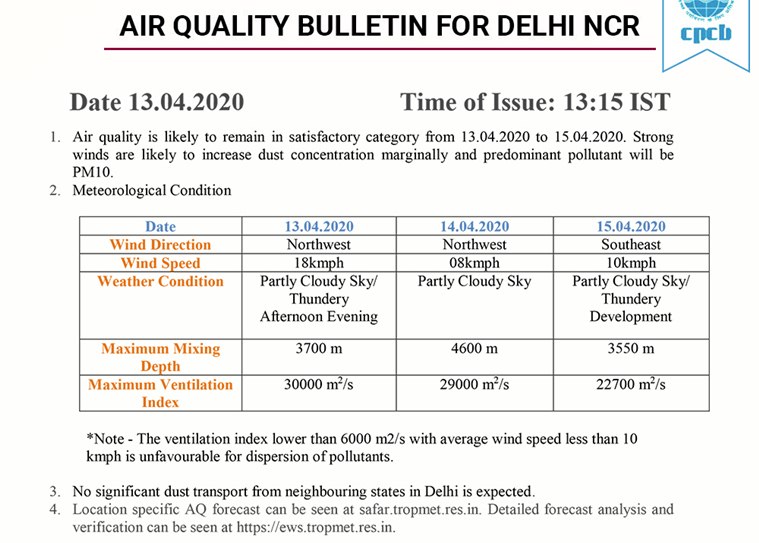New Delhi (NVI): As the 21-day nationwide lockdown in India almost comes to a close, various cities in the country including Delhi have witnessed a huge reduction in air pollution levels, with citizens breathing the cleanest air in about a decade.
It is almost three weeks since the COVID-19 lockdown was imposed, that millions of vehicles are off the roads, leading to an improved AQI, even in places known for their toxic air.
Data from SAFAR (System of Air Quality and Weather Forecasting And Research) shows that post lockdown, Delhi has seen a 51 per cent reduction in PM 2.5 and 49 per cent reduction in PM 10 levels.
Delhi is ranked among the most polluted cities in the world. In 2019, Delhi had an average AQI of 98.6, making it the fifth most polluted city.
Apart from the national capital, Gurugram and Noida have also witnessed a drop of over 50 per cent in PM 2.5 concentration, days after the lockdown was imposed.
Meanwhile, the AQI bulletin for Delhi-NCR released today said that the air quality is likely to remain in a ‘satisfactory category’ from 13.03.2020 to 15.04.2020.

Almost whole of the April so far has witnessed a satisfactory air quality, as per CPCB.
On March 27, 28 and 29, the air quality remained in ‘good category’, according to the board.
Here, if we compare it with the pre-lockdown situation, then the AQI was in ‘moderate’ category on March 20 and 21. The air quality also deteriorated marginally in a week before the lockdown was imposed on March 24.
In the first two weeks of March, the AQI oscillated between ‘moderate’ to ‘poor quality’ with PM 10 being the predominant pollutant, according to CPCB data.
In a nutshell, the 21-day lockdown, which has brought 1.3 billion people to a near halt in India, has also provided temporary relief from the burning issue of pollution in the country.
Particulate matter PM 2.5 is one of the primary reasons responsible for health risks such as cardiovascular diseases, respiratory diseases, and lung cancer. PM 2.5 and nitrogen dioxide are released by vehicles and power plants.
As per Air Quality Index scale, as defined by the US-EPA (Environmental Protection Agency) 2016 standard, an AQI between 0 and 50 is considered to be “good” while between 51-100 is considered “moderate” and between 101-150, it is considered “unhealthy for sensitive groups”.
The air quality is rated “unhealthy” if AQI is between 151-200 and “very unhealthy” between 201-300. It is considered to be “hazardous” if it is found above 300.
According to another report released by the Global Strategic Climate Communication (GSCC) — a global network of communications professionals in the field of climate and energy, over 90 cities in the country have shown minimal air pollution since the lockdown.
35 cities ranked “good” on the fourth day of the lockdown, as per the report.
Before lockdown, the positive effect of a limited human interference with the environment was felt on March 22 when the country observed ‘Janata Curfew’, a one-day lockdown call by Prime Minister Narendra Modi to fight the coronavirus spread in the country.
Since then, the air quality levels have significantly improved, so much so that residents in Jalandhar were able to see the mighty Dhauladhar mountain range in Himachal Pradesh, 213 km away from the city. According to reports, it was after 30 long years that people in Jalandhar were able to see the snow-capped Dhauladhar peaks.
A recent Greenpeace report said that air pollution from burning fossil fuels was generating losses of USD 150 billion in India, i.e., Rs 10.7 lakh crore annually.
According to the 2019 world ranking, India accounts for two-thirds of the world’s most polluted cities — 21 of the most polluted 30 cities; 14 of the highest 20; and six of the highest 10.








